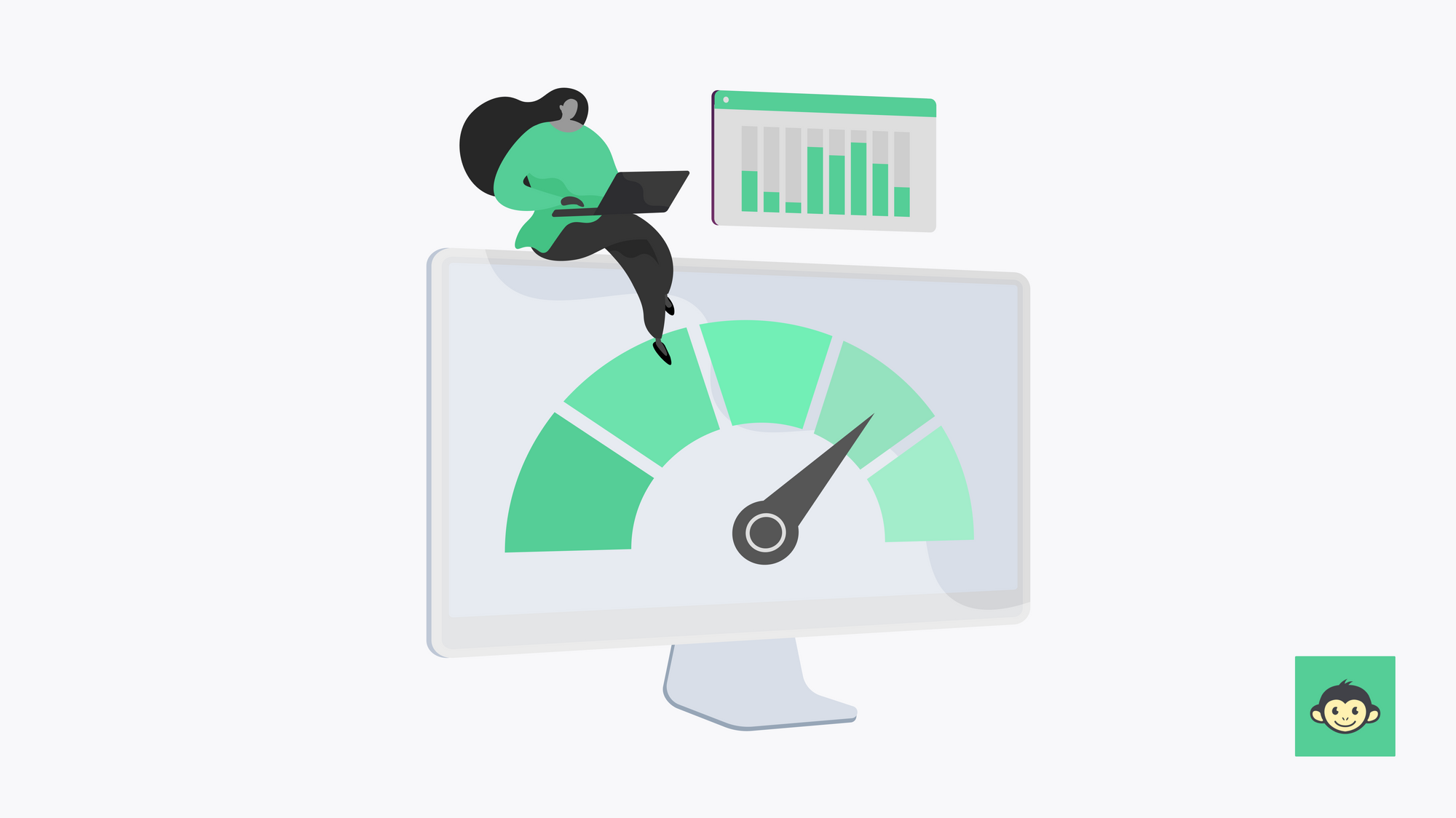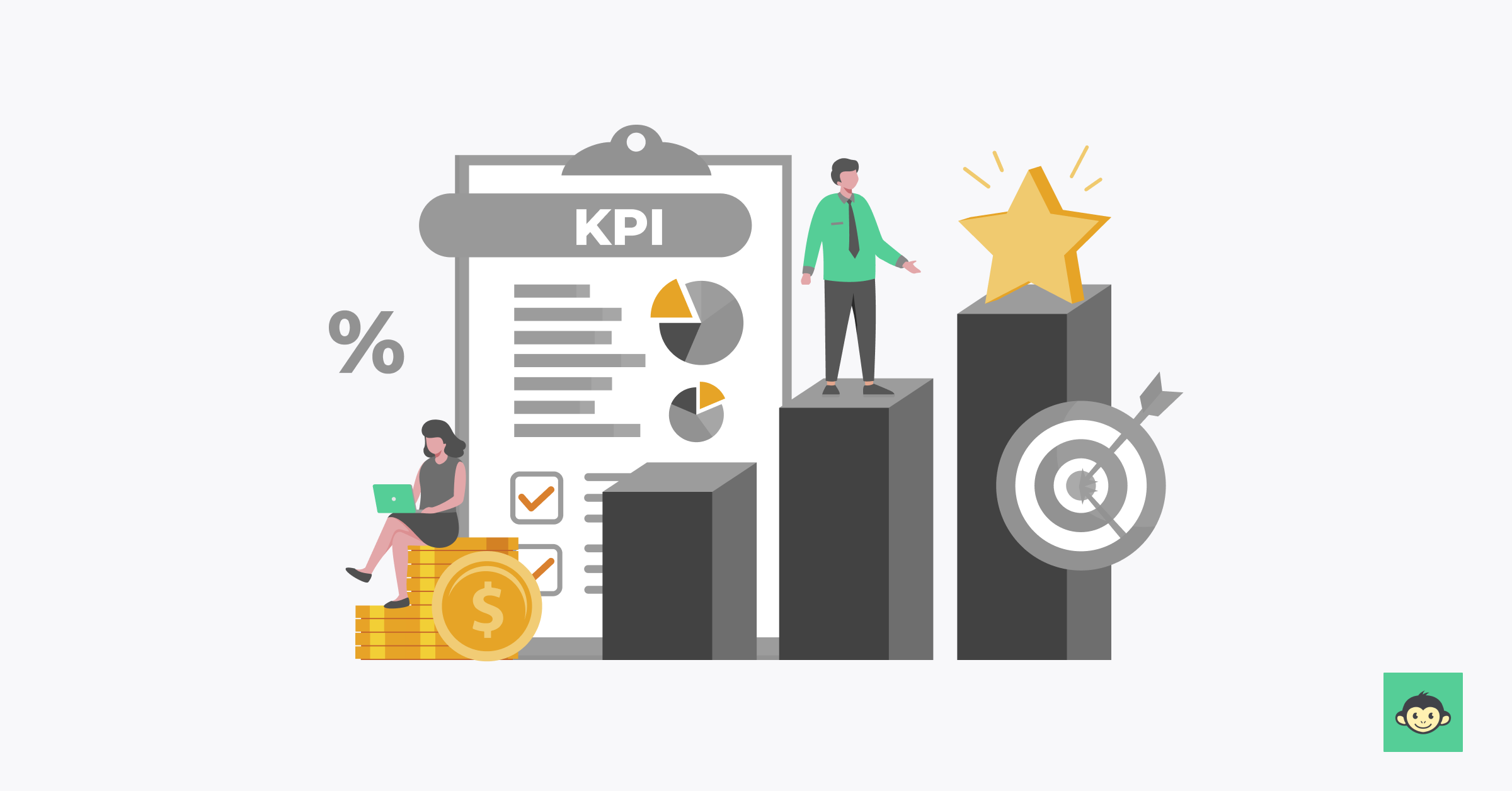A complete guide to leverage employee engagement benchmarks data in 2024

Have you ever found yourself lost in the labyrinth of employee engagement data, desperately trying to decipher the cryptic patterns and uncover the secret to keeping your team motivated and productive? Well, fear not because we've got you covered.
After all, as the great philosopher Jim from Accounting once said, "Data without insights is like a donut without sprinkles—plain and unfulfilling!" And who wants an unfulfilling donut, right? Certainly not us!
In this article, we'll explore how you can harness this treasure trove of strategically important information to supercharge your workforce, boost employee satisfaction, and ultimately achieve those coveted business goals.
What is the benchmark for employee engagement?

The benchmark for employee engagement serves as a standard or reference point against which companies and industries can measure their own levels of employee engagement. It provides a way to gauge how effectively an organization is engaging and motivating its workforce compared to industry peers or best practices.
Typically, benchmark data is collected through surveys or assessments that measure various aspects of employee engagement, such as job satisfaction, commitment, loyalty, and productivity. These surveys include questions related to communication, recognition, career growth opportunities, work-life balance, overall job satisfaction and more.
Once the data is collected and analyzed, it's transformed into meaningful metrics and benchmarks that organizations can use to assess their own performance. By comparing their results to industry benchmarks, companies can identify areas where they excel and areas that may require improvement.
Types of employee engagement data benchmarks

Employee engagement data benchmarks encompass various types that organizations utilize to gauge their employees' level of engagement and satisfaction. These benchmarks serve as valuable metrics for assessing the effectiveness of engagement initiatives and identifying areas for improvement.
- Overall engagement scores: This benchmark provides a holistic view of employees' engagement levels within the organization. It typically involves measuring factors such as job satisfaction, commitment to the company, and willingness to go above and beyond in their roles. Overall engagement scores offer a high-level snapshot of the organization's engagement climate.
- Departmental or team-level benchmarks: Organizations often break down engagement data by departments or teams to identify disparities and trends within different areas of the company. Comparing engagement scores between teams allows management to pinpoint areas that may require targeted interventions or additional support.
- Industry benchmarks: Industry benchmarks provide organizations with context by comparing their engagement data to industry standards or averages. This allows organizations to assess how they stack up against their competitors and identify areas where they may need to improve to remain competitive in attracting and retaining top talent.
- Demographic benchmarks: Analyzing engagement data based on demographic factors such as age, gender, tenure, and job level can reveal insights into how different groups of employees experience the workplace. Identifying disparities in engagement levels among demographic groups helps organizations tailor engagement initiatives to meet the unique needs of diverse employee populations.
- Leadership effectiveness benchmarks: Employee engagement data can also be used to assess the effectiveness of leadership within the organization. Benchmarks related to leadership effectiveness measure factors such as trust in leadership, communication effectiveness, and perceived support from managers. These benchmarks help identify areas where leadership development or training may be needed to enhance employee engagement.
- Employee well-being benchmarks: Employee well-being is closely linked to engagement, productivity, and retention. Benchmarks related to employee well-being measure factors such as work-life balance, stress levels, and access to support resources. Monitoring employee well-being benchmarks allows organizations to implement initiatives that promote a healthy work environment and support employee mental and physical health.
Key factors that influence employee engagement benchmarks

There are numerous aspects that affect employee engagement in an organization and its benchmarks. Here, we will take a look at the top 7 most important ones.
- Leadership: Effective leadership plays a crucial role in employee engagement. Leaders who inspire and empower their teams, provide clear direction, and foster a positive work environment tend to have higher levels of employee engagement.
- Communication: Open and transparent communication channels facilitate employee engagement. Regular and meaningful communication helps employees understand company goals, expectations, and their contributions.
- Recognition and rewards: Recognizing and rewarding employees for their achievements and efforts boosts employee morale and motivation. Employees who feel appreciated are likelier to be engaged and committed to their work.
- Employee well-being: Supporting employee well-being, both physical and mental, positively impacts engagement. Wellness programs, employee assistance programs, and a supportive work environment contribute to higher levels of engagement.
- Organizational culture: A positive and inclusive organizational culture fosters engagement. When employees feel a sense of belonging, trust, and alignment with the company's values, they are more likely to be engaged and motivated.
- Career development opportunities: Providing opportunities for professional growth and advancement is essential for employee engagement. Employees who see a clear path for career development within the organization are more likely to be engaged and committed to their roles.
- Work-life balance: Maintaining a healthy balance between work and personal life is critical for employee engagement. Organizations that prioritize work-life balance initiatives, such as flexible work arrangements or remote work options, can enhance employee satisfaction and engagement.
When does employee engagement benchmark data come in handy?

Employee engagement benchmark data is a powerful tool that helps organizations understand their performance and make informed decisions to improve employee engagement levels. By comparing their results to the average employee engagement score in the industry, companies can assess their performance and identify areas for improvement.
This data serves as a compass, guiding organizations on their engagement journey. By leveraging industry or high-performing organizations' benchmarks, companies can set realistic targets and strive to exceed them. This inspires a culture of continuous improvement and creates a workplace where engagement thrives.
Benchmark data reveals an organization's strengths and weaknesses in employee engagement. It highlights areas where the organization excels, allowing leaders to leverage these strengths and inspire their workforce further. At the same time, it sheds light on areas that require attention, prompting innovative solutions to enhance engagement.
It also helps in making informed decisions with valuable insights that support developing and implementing strategies and initiatives. Organizations can allocate resources effectively by leveraging data-driven decision-making and taking targeted actions to improve employee engagement.
Are there any challenges with using employee engagement benchmarks?

Using employee engagement benchmarks can be highly beneficial for organizations, providing valuable insights into workforce satisfaction and productivity. However, there are also several challenges associated with their implementation and interpretation.
- Subjectivity and bias: Employee engagement surveys rely on self-reported data, which can be influenced by individual perceptions, biases, and personal experiences. This subjectivity can lead to variations in responses and affect the accuracy and reliability of benchmarking data.
- Limited scope: Employee engagement surveys may not capture the full spectrum of factors that contribute to engagement and satisfaction in the workplace. Certain aspects of employee experience, such as team dynamics, organizational culture, or leadership styles, may not be adequately addressed in standardized survey questions.
- Benchmark selection: Choosing relevant benchmarks for comparison can be challenging, especially for organizations operating in diverse industries or regions. Identifying suitable benchmarks that accurately reflect the organization's context and priorities is essential for meaningful comparisons and actionable insights.
- Data interpretation: Interpreting engagement benchmark data requires careful analysis and contextual understanding. Simply comparing scores to industry averages or previous years' results may not provide meaningful insights without considering factors such as organizational size, industry norms, or demographic composition.
- Addressing variability: Employee engagement levels can fluctuate over time due to various internal and external factors, such as changes in leadership, organizational restructuring, or economic conditions. Managing and addressing this variability requires ongoing monitoring and adjustment of engagement strategies.
- Lack of actionable insights: While benchmarks can highlight areas of improvement, they may not always provide clear guidance on how to address underlying issues. Without actionable insights derived from benchmarking data, organizations may struggle to implement effective interventions to enhance employee engagement.
- Ensuring confidentiality and trust: Maintaining confidentiality and trust is essential when collecting and analyzing employee engagement data. Employees may be hesitant to provide honest feedback if they perceive a lack of confidentiality or fear potential repercussions. Building trust and ensuring anonymity in the survey process is crucial for obtaining accurate and meaningful data.
What is employee engagement KPI?

Employee engagement KPIs (Key Performance Indicators) are specific metrics used to measure and evaluate the level of employee engagement within an organization. These KPIs provide quantitative data that helps leaders and HR professionals assess the effectiveness of their engagement initiatives and track progress over time. Here are the top 12:
- Employee satisfaction: It measures the overall satisfaction of employees with their work, the company culture, and the work environment.
- Employee net promoter score: eNPS determines the likelihood of employees recommending their organization as a great place to work.
- Employee turnover rate: It calculates the percentage of employees who leave the organization over a specific period. High turnover rates may indicate low employee engagement.
- Absenteeism rate: This metric measures the frequency and duration of employee absences. A high absenteeism rate could indicate disengaged employees.
- Employee productivity: It evaluates the level of productivity and output achieved by employees. Engaged employees tend to be more productive.
- Retention rate: Higher retention rates often indicate better engagement. It measures the percentage of employees who stay with the organization over a given period.
- Employee feedback and participation: This KPI tracks the level of employee participation in feedback surveys, suggestion programs, or employee forums, indicating their level of engagement and willingness to contribute.
- Performance rating: It assesses employee performance as rated by supervisors, peers, or performance management systems. Engaged employees often receive higher ratings.
- Employee development and training: It measures the participation and completion rates of training and development programs, indicating the level of investment in employee growth and development.
- Recognition and rewards: They track the frequency and effectiveness of employee recognition programs, highlighting the level of appreciation and reward for employee contributions.
- Employee engagement initiatives effectiveness: This KPI evaluates the impact and success of engagement initiatives implemented by the organization, providing insights into their effectiveness in improving overall employee engagement levels.
- Employee morale: It assesses the overall morale and motivation levels of employees, indicating their level of engagement and satisfaction with their work environment and company culture.
How is employee engagement KPI measured?
Employee engagement KPIs are measured through various methods. Feedback taken via employee satisfaction surveys or engagement surveys is commonly used to gather data on employee perceptions and attitudes. These surveys typically include specific questions or scales that assess different aspects of engagement.
Plus, HR data such as turnover, absenteeism, and productivity metrics can be analyzed to evaluate engagement levels. Qualitative feedback, performance evaluations, and participation rates in development programs also help in measuring employee engagement.
Organizations can quantify and track their employee engagement KPIs by collecting and analyzing these data points, gaining insights to guide their engagement strategies.
What is the employee engagement index score?
The employee engagement index score is a numerical representation of the overall level of employee engagement within an organization. It is typically calculated based on data collected from employee engagement surveys or assessments.
The index score aggregates responses to specific engagement-related questions and provides a measure of the average engagement level across the workforce. It is often presented as a percentage or a numerical value on a scale and is compared against benchmark scores.
A higher index score indicates a higher level of employee engagement, while a low score suggests a need for improvement. The employee engagement index score serves as a valuable benchmark and helps organizations track engagement trends over time, set goals, and identify areas for targeted interventions.
How to calculate employee engagement scores?

Measuring engagement scores should be used as a starting point for understanding engagement levels and guiding strategies. They provide a snapshot of employee perceptions at a specific time and can help in informed decision-making and action planning.
Here are a few steps that you must follow to measure and increase employee satisfaction and engagement scores at your organization.
- Select or develop a set of employee engagement survey questions that specifically measure employee engagement, including aspects like job satisfaction, commitment, and motivation.
- Administer the employee survey to employees and collect their responses. This can be done through online surveys, paper-based questionnaires, or other survey platforms.
- Assign numerical values or scores to the survey responses. This allows for the quantification of engagement levels.
- Sum the scores for each question and calculate the average for each respondent. This represents their engagement level for that specific question.
- Calculate the average scores across all respondents for each engagement question. This provides an overall average engagement score for the organization.
- Normalize the scores to a common scale, such as a percentage or a scale of 1 to 5, for easier interpretation and comparison with industry-specific benchmarks.
- Analyze the engagement scores, identify trends, and interpret the findings.
- Compare the scores to benchmarks or previous survey results to understand the organization's engagement level and identify areas for improvement.
Achieving a good employee engagement score is critical to the success of any organization.
Tips & tricks on using employee engagement benchmarks scores
To effectively leverage employee engagement benchmark scores and drive meaningful improvements in your organization, here are some tips/checklists you must always remember.
- Set clear objectives and goals for benchmarking.
- Choose relevant benchmarks for meaningful comparisons.
- Understand the context behind the benchmark data.
- Identify strengths and weaknesses in employee engagement.
- Focus on specific areas of improvement based on benchmark insights.
- Involve employees in discussions and action planning.
- Track progress over time to measure improvement.
- Customize engagement strategies to address specific needs.
- Communicate benchmark findings transparently to leaders and employees.
- Continuously iterate and evolve the benchmarking approach.
- Benchmark against industry standards to gain insights into your organization's competitive position.
- Regularly review and update benchmarking criteria to ensure relevance.
- Seek feedback from employees on the effectiveness of engagement initiatives to inform future strategies.
- Encourage cross-departmental collaboration to address challenges comprehensively.
- Consider qualitative data alongside quantitative benchmarks to gain a comprehensive understanding of employee perceptions and experiences.
Top 6 employee engagement data statistics in 2023
- Gallup reports that the highest percentage of engaged employees it’s ever recorded in the US was 36% in 2020.
- Employee appreciation is directly related to engagement and productivity, as 69% of employees report that they would work harder if appreciated.
- Companies with highly engaged employees are 21% more profitable and 17% more productive than those with disengaged staff.
- Corporate Leadership Council reports that organizations with high employee engagement experience 59% less turnover
- According to SHRM’s Employee Job Satisfaction and Engagement report, only 29% of employees are “very satisfied” with current career advancement opportunities in their organization.
- Nearly 50% of companies have now started to focus more on productivity and engagement than just performance resorts Clear Review.
How CultureMonkey’s industry-wise employee engagement benchmark data can help you measure and improve engagement?
Employee engagement is crucial for the success and growth of any organization. But how do you know if your engagement levels are good or bad? Enter CultureMonkey's industry-wise employee engagement benchmark data, a powerful tool that helps companies measure and improve their engagement strategies like never before.
CultureMonkey takes your overall survey scores and translates them into meaningful figures. No more guesswork or subjective interpretations! With the benchmarking feature, you can easily assess whether your engagement scores are above average, on par, or need improvement.
Furthermore, engagement scores can vary significantly from industry to industry. What might be considered high engagement in one sector could be average in another. That's where CultureMonkey comes in.
The platform provides industry-wise engagement score benchmarks, giving you valuable context and comparisons specific to your industry. This empowers you to set realistic targets, optimize your engagement score based on industry standards, and stay ahead of the competition.
CultureMonkey also provide benchmark comparisons for eNPS (Employee Net Promoter Score), a metric that measures employee loyalty and advocacy. This additional insight helps you gauge the level of employee satisfaction and loyalty.
Moreover, the platform offers a comprehensive manager dashboard comparison, enabling internal team-wise engagement benchmarking. This feature allows managers to gain insights into how their teams fare in comparison to each other, identify areas for improvement, and drive team-specific engagement initiatives.
Visit our website to learn more about how CultureMonkey can help you measure and improve employee engagement like never before.
FAQs
1. Why is employee engagement benchmark data useful?
Employee engagement benchmark data is invaluable for organizations seeking to assess and improve their workplace environments. By comparing their engagement metrics against industry standards or peer organizations, companies can gain insights into their relative performance and identify areas for improvement. Benchmark data provides a valuable reference point for setting goals, measuring progress, and making data-driven decisions to enhance employee satisfaction.
2. How can I access employee engagement benchmark data?
Accessing employee engagement benchmark data typically involves leveraging industry reports, surveys, or specialized consulting services. Many research firms and HR organizations publish annual reports or conduct surveys that provide benchmark data on employee engagement across various industries and regions. Additionally, consulting firms may offer benchmarking services to help organizations compare their engagement metrics against industry peers or best-in-class organizations.
3. What are the key metrics included in employee engagement benchmark data?
Employee engagement benchmark data typically includes key metrics such as overall engagement scores, satisfaction levels, retention rates, absenteeism, and responses to specific survey questions related to communication, leadership, career development, and organizational culture. These metrics offer a comprehensive view of the employee experience and provide organizations with actionable insights into areas of strength and opportunities for enhancement.
4. How should I interpret employee engagement benchmark data?
Interpreting employee engagement benchmark data involves analyzing trends, identifying outliers, and comparing results against relevant benchmarks or organizational goals. Organizations should look for patterns or discrepancies in the data and consider factors such as company size, industry, and regional differences when interpreting results. It's essential to delve beyond the numbers and understand the underlying drivers of engagement to develop targeted interventions and initiatives.
5. Can employee engagement benchmarks vary depending on cultural or regional differences?
Yes, employee engagement benchmarks can vary significantly based on cultural or regional differences. Cultural norms, values, and societal expectations can influence how employees perceive engagement factors such as communication styles, leadership approaches, and work-life balance. Organizations operating in diverse regions must consider these cultural nuances when establishing benchmarks and interpreting survey data to ensure relevance and accuracy across different contexts.
6. Can employee engagement benchmarks help predict organizational performance and success?
Absolutely, employee engagement benchmarks serve as valuable predictors of organizational performance and success. Research consistently shows a strong correlation between high levels of employee engagement and key business outcomes such as increased productivity, higher customer satisfaction, lower turnover rates, and improved financial performance. By monitoring and analyzing engagement metrics over time, organizations can identify trends, anticipate challenges, and proactively implement strategies.



